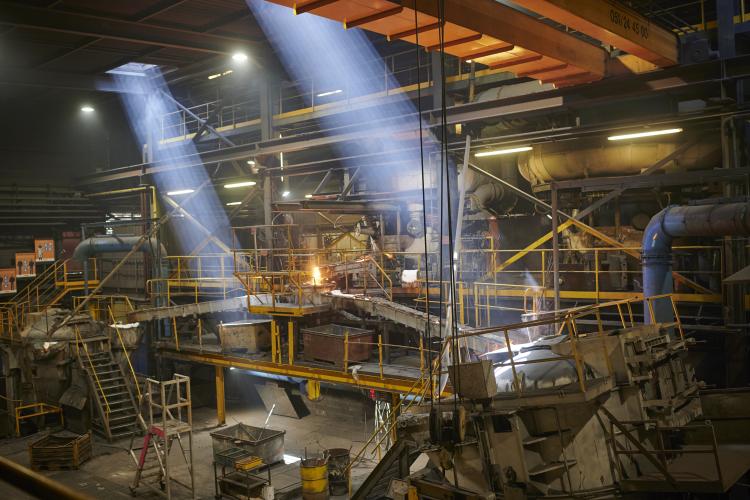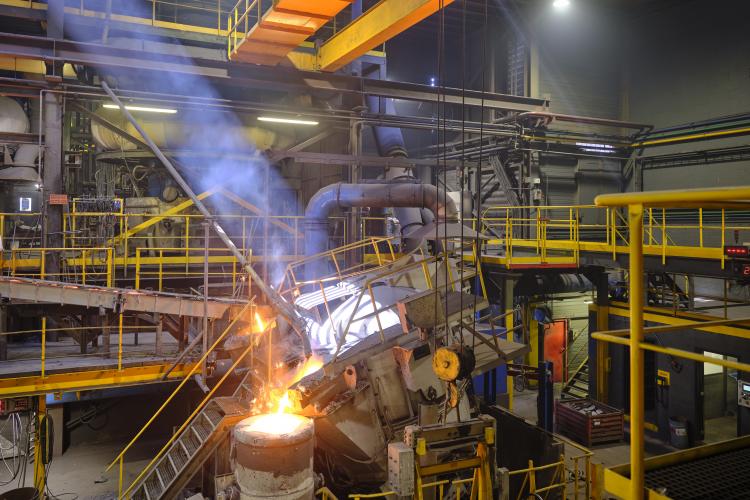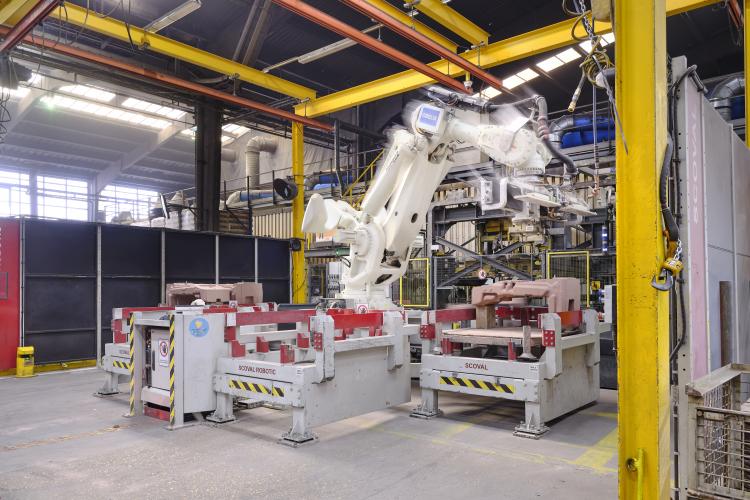
Casting in our high-tech foundry
At Proferro, we produce a wide range of machined castings for original equipment manufacturers. This includes high-tech parts in lamellar and nodular cast iron from 50 to 500 kg, with box dimensions of 1600x1200x(2x400). The following specifications apply to our cast iron:
Grey cast iron
EN1561 // EN-GJL 150 – 200 – 250 – 300
Ductile cast iron
EN1563 // EN-GJS 400 – 450 – 500 – 600 – 700
We offer engineered casting solutions for medium-sized series of 500 to 20,000 pieces, in a long-term partnership context. Our considerable experience and worldwide expertise guarantee that all products from Proferro satisfy the strictest quality requirements and at an optimum total cost.

Melting oven cupola
The iron is melted in the hot air blast cupola furnace and it is then poured into the casting molds. The hot air cupola has a melting capacity of 15 tons per hour and it can melt basic iron for both nodular and grey cast iron. The charging system is fully automatic and the cupola consists of a long, vertical cylinder into which the charge is loaded from above. Hot air is blown near the bottom around the melting zone where the temperature is approximately 1,500°C, enabling the iron and steel in the charge to melt. The coke causes carburetion of the metal and removes any rust by deoxidization.
The entire process is controlled from the control room. The molten iron flows out at the bottom through a tap hole, while on the other side of the furnace the liquid slag is drawn off through the slag hole. The slack is used for road building and the construction industry. Before the molten iron is used for casting, thermal and spectrographic analyses are carried out in the lab to determine the carbon and silicon content, as well as other elements.

Holding furnaces
In addition to the cupola, which can hold 25 tons, just under 80 tons can be kept hot in the two large holding furnaces, each of which has a capacity of 40 tons. The heat source is an electrical inductor that makes up for heat losses and which can further heat up the molten iron if necessary. These furnaces provide a stock of molten iron to absorb fluctuations in supply and demand and also make it possible to carry out the necessary analyses. A forklift truck then carries the pouring ladle to the furnace where it is filled, and additional quality control is then performed.

High-pressure molding line HWS (Seiatsu)
Proferro’s HWS EFA-SD7 high-pressure molding line works with box dimensions of 1600x1200x400x400+60. The machine’s advanced technology can produce small and large series and handle castings weighing between 50 kg and 500 kg.
To cast a part, you first need a set of molding boxes. This consists of two parts, namely a top half and a bottom half, and sand is pressed into each of these two parts against the pattern. The resulting mold corresponds to one-half of the casting that will eventually be made. The two halves fit perfectly together, which ensures that we can obtain a block of sand with a hollow that has exactly the same shape as the casting to be produced. If the casting itself has to be hollow, then the molding box also includes a core. The core, which is also made in chemically bound sand, is slightly smaller than the pressed mold, which means that the cast iron can flow evenly into the space between the core and the mold box. The principle is simple: where there is no sand, we eventually get cast iron.